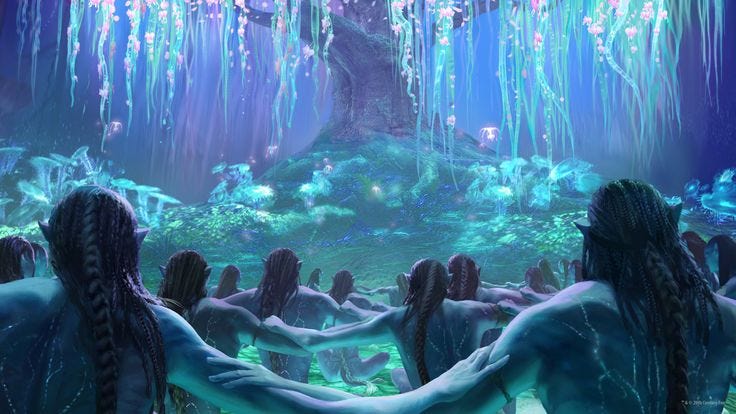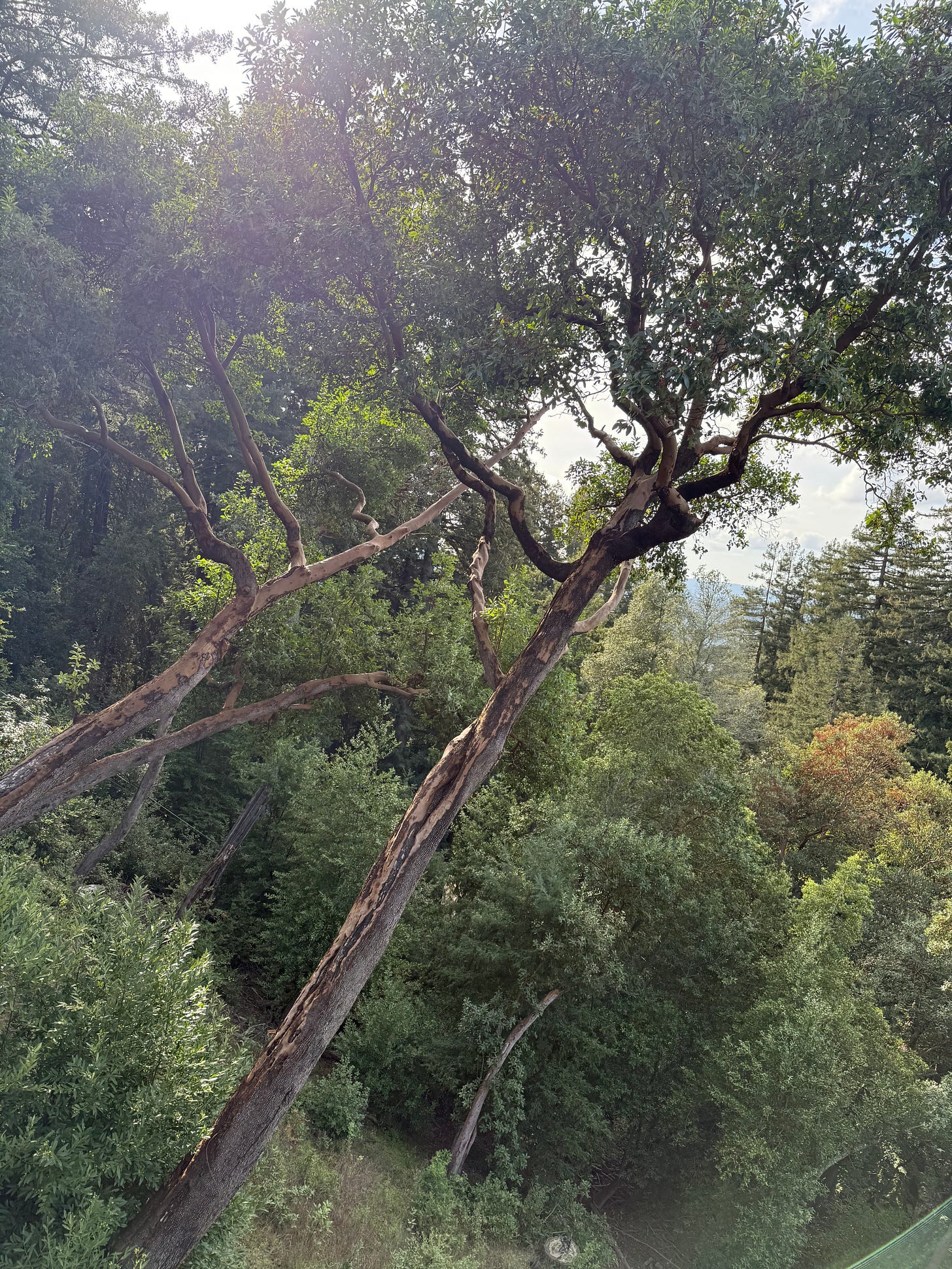
There is a little grove of redwoods next to my home. And by little, I don’t mean the trees are small (they are NOT). I mean a small grouping of these ancient, beautiful (and very very tall) trees.
I like to sit outside, drinking a hot cup of tea and contemplating the way that they live.
What can we learn from them by simply noticing how they grow slowly without rushing through the world, in stark contrast to how we live our hectic and chaotic lives?
Tolkien deeply understood this wisdom, and embodied the patience of slow living in the Ents, tree beings, in Lord of the Rings.
Redwood trees grow in community and stand together, supporting each other against threat of fire and drought and wind. California, with its devastating fires and chronic drought conditions, is not the most supportive environment for these ancient creatures. Nonetheless, they go beyond survival and they truly thrive here. But how do they do it?
They live in community and offer mutual support. They have deep roots.
Patience.
Community.
Deep roots.
Did you know that trees communicate through their roots? If a tree is under duress, a neighboring tree can send nutrients to support its recovery. How amazingly beautiful and poignant.
But wait, there’s more!
Mycelium, the below-ground form of mushrooms and other fungi, create almost invisible networks throughout every inch of living soil, transmitting, communications, and nutrients. Peter Wohlleben dubbed this Mycorrhizal network the “woodwide web”.
Our bodies have a network that is looks identical to the mycorrhizal network, called Fascia. Fascia is a layer of connective tissue just beneath the skin and surrounding all of your organs, connecting every part of your body to every other part in a web of wonder and communication.
As above, so below.
The movie Avatar is a metaphor for the Transpersonal, and Cameron used the model of mycelium to help craft the powerful message that we are all connected through sometimes visible (and sometimes invisible) networks.
In this scene from the movie, you can see the Na’vi linking arms in ceremony and community, mirroring the connections of mycelium below ground. They surround and connect with their spiritual mother and memory-keeper, the Tree of Souls.

The Na’vi don’t just coexist with nature. Nature is a part of them, and they are a part of it. They share willingly, supporting each other and the seen and unseen beings around them willingly and with grace.
Nature is a gift economy.
A beautiful new book by Robin Wall Kimmerer, The Serviceberry, paints the picture of how nature in all its incredible complexity thrives through mutual aid and support, with the serviceberry as the central character. How strange and sad to think that we humans believe that we are more advanced than nature, and that we can control it. What arrogance and how very off-the-mark.
In reality, we have MUCH to learn.
We may be technologically advanced, but we are in our infancy with understanding deep systems ecology.
On the opposite side of our home are a pair of Madrone trees. Madrones are completely different from Redwoods. They are asymmetrical, growing in curves and angles, sideways off of a steep hillside. One has to wonder how these large trees can cling to the hillside without toppling, year after year, storm after storm.
Deep roots.
Madrones teach us that we don’t need the perfect foundation, the most fertile ground, or the perfect childhood in order to thrive. They send their roots deep into the ground for sustenance and nourishment, and then they can grow wherever the hell they choose to!
We can do the same, if we so choose.
The last tree, one of my most cherished, is the Cypress tree. There are numerous beautiful and inspiring images of Cypress trees, clinging to rocks, weathering the salty air and growing where no tree should dare make the attempt. They are ancient in their wisdom and inspiring in their resilience and persistence. They don’t tend to grow in communities like Redwoods or Madrones, but they create community with the birds and little creatures that live within their protection.

Community doesn’t need to be homogenous, and I would argue that the most resilient communities are heterogenous and diverse.
Ancient wisdom. Diversity.
Those of us living in the US today, and so many other areas of the world where there is discontent and strife can take a lesson from these beautiful, ancient, and even magical beings.
We can thrive through strife. We can grow through turbulence and share our wisdom just by existing.
Sometimes just BE-ing is enough.
What do all these trees have in common?
Deep roots. Community. Gift economy. Patience and persistence. BE-ing.
The trees tell us the simple and important message:
It’s going to be OK.
©2025 Linnea Butler









Welcome aboard, and you are a colleague.
I love this, Linnea. Thanks for the references and book recommendation. I've been slow to pick up Robin Wall Kimmerer's work, but I will. I gave my mother Braiding Sweetgrass, and she loved it. I'll definitely pick up The Serviceberry. Do you know the work of Suzanne Simard? She wrote a book called Finding the Mother Tree, and if you haven't read it, I think you'd enjoy it. Also, I highly recommend the work of Diana Beresford-Kroeger—in particular, To Speak for the Trees and Our Green Heart. I'm happy to have discovered you. As a fiction writer, I'm currently working on a new project that's requiring me to learn a lot about trees.